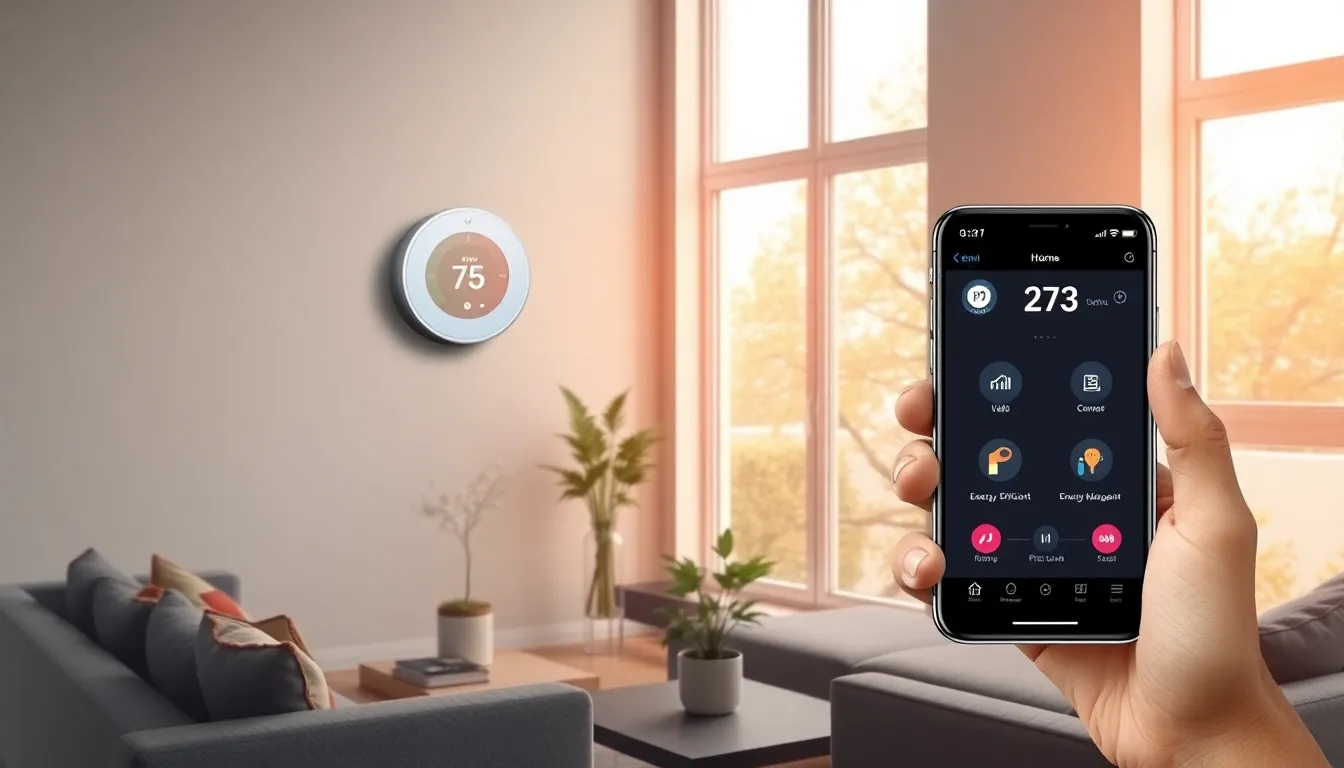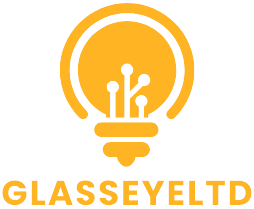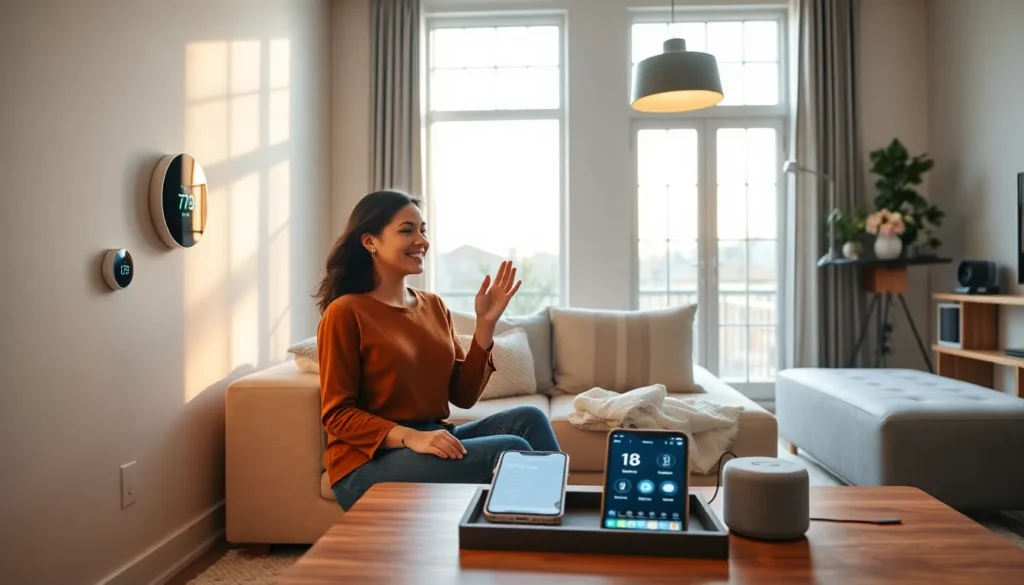Table of Contents
ToggleImagine walking into your home and having it greet you like an overzealous butler. Thanks to the Internet of Things (IoT), that dream is closer to reality than ever. Smart homes are revolutionizing how people live, turning mundane tasks into effortless experiences. From lights that dim with a simple voice command to fridges that remind you when you’re out of milk, these gadgets are the new superheroes of home life.
As technology continues to evolve, the IoT is weaving itself into the fabric of everyday living. It’s not just about convenience; it’s about creating a space that anticipates needs and enhances comfort. Dive into the world of smart homes and discover how these innovative devices can transform any house into a futuristic haven, where technology and comfort coexist in perfect harmony.
Overview of IoT in Smart Homes
IoT technology significantly improves smart homes by connecting devices, enabling communication, and automating tasks. Smart thermostats, for example, adjust heating and cooling based on user preferences, leading to energy savings. Connected security systems provide real-time monitoring through cameras and sensors, enhancing home safety.
Devices interact seamlessly, allowing control through smartphones or voice-activated assistants. Users can manage lighting, appliances, and entertainment systems remotely, ensuring convenience. Smart refrigerators monitor grocery supplies and suggest recipes, transforming meal planning.
Integration of artificial intelligence enhances these devices’ capabilities. AI-powered systems learn from user behaviors, predicting needs and increasing overall efficiency. An intelligent assistant can set reminders or provide weather updates tailored to individual schedules.
Data collected by smart devices creates a personalized experience. Homeowners can analyze energy usage patterns, optimizing consumption for cost savings. Enhanced comfort arises from smart technology adjusting living spaces based on personal preferences.
Security features continuously monitor threats, sending alerts about unusual activities. Homeowners benefit from peace of mind while away. Smart locks grant access remotely, allowing family members to enter without physical keys.
IoT adoption in smart homes reshapes everyday living. Automation simplifies daily tasks, while data-driven insights create energy-efficient and secure environments. The synergy of these technologies fosters a harmonious lifestyle, ultimately improving the quality of life for residents.
Benefits of IoT in Smart Homes

Smart homes leverage IoT technology to enhance daily living through various benefits. The integration of connected devices transforms how homeowners interact with their environments.
Enhanced Convenience
Smart homes significantly increase convenience for users. Voice-activated devices allow for hands-free control of lighting, temperature, and appliances. Remote access through mobile apps enables homeowners to manage their environments from anywhere. Scheduling features automate daily tasks, such as watering plants or adjusting the thermostat at specific times. Effortless monitoring of home security systems provides updates and alerts on suspicious activities. Overall, smart home technology streamlines routines and reduces stress, making life easier for residents.
Improved Energy Efficiency
Energy efficiency sees marked improvement with IoT smart homes. Smart thermostats adapt to user behavior, optimizing heating and cooling to minimize waste. These devices can analyze energy consumption patterns, helping homeowners identify usage spikes and adjust accordingly. Smart lighting systems automatically adjust brightness based on occupancy and daylight, leading to reduced electricity bills. Additionally, connected appliances monitor energy usage and suggest ways to save. Utilization of renewable energy sources becomes more straightforward, encouraging sustainable living practices. Thus, smart homes contribute to both cost savings and environmental responsibility.
Key Components of IoT in Smart Homes
IoT integrates various components that enhance smart home functionality. Smart devices and home automation systems are essential for creating an efficient living environment.
Smart Devices
Smart devices form the backbone of IoT in smart homes. These products include smart bulbs, thermostats, security cameras, and appliances. Connected bulbs can adjust brightness based on time and occupancy, promoting energy efficiency. Thermostats recognize patterns in heating and cooling preferences, optimizing energy use. Security cameras provide real-time video feeds accessible through mobile apps. Appliances, such as smart refrigerators, track food supplies and suggest recipes. Each device communicates seamlessly with others, ensuring homeowners enjoy an interconnected experience that simplifies daily tasks.
Home Automation Systems
Home automation systems coordinate multiple smart devices for streamlined control. These systems centralize management, enabling users to automate routines like lighting, temperature, and security settings. For instance, a user can schedule lights to turn on at sunset and thermostats to adjust before arriving home. Integration with voice assistants enhances usability, allowing hands-free operation. Besides convenience, automation systems monitor energy usage, producing savings over time. Advanced systems analyze data from devices, enabling tailored experiences for residents. Overall, these components significantly improve efficiency and comfort in smart homes.
Challenges of Implementing IoT in Smart Homes
Implementing IoT in smart homes comes with several challenges that can impact user experience and system effectiveness.
Security Concerns
Security concerns rank high in the challenges of IoT. Many smart devices collect and transmit personal data, making them potential targets for cyberattacks. Unauthorized access to smart home systems can lead to privacy violations and even theft. As reported by McAfee, 61% of adults using smart home devices worry about their security. Therefore, manufacturers must implement robust security measures, including encryption and regular updates, to protect user data against threats.
Interoperability Issues
Interoperability issues frequently arise when integrating various smart devices. Different manufacturers often develop devices that run on separate protocols, creating barriers to communication. These barriers can frustrate users who want seamless integration across their smart home systems. A study by ABI Research highlights that only 40% of smart home devices are fully compatible with others. Addressing these compatibility challenges is essential for a unified smart home experience, encouraging standardization among device manufacturers.
Future Trends in IoT for Smart Homes
The future of IoT in smart homes features several promising trends. Home automation as a service (HAaaS) is gaining traction, allowing users to easily access smart home technologies without large upfront costs. Subscription-based models enable continuous updates and maintenance, ensuring users benefit from the latest advancements.
Enhanced artificial intelligence integration predicts not only user preferences but also anticipates potential issues. By learning behaviors over time, systems can offer personalized suggestions, such as adjusting lighting or temperature before residents arrive home. Data-driven insights from smart devices lead to more informed decision-making regarding energy consumption and security management.
Increased demand for interoperability results in more manufacturers collaborating to create compatible devices. This trend addresses the challenge highlighted by ABI Research, where only 40% of smart home devices currently achieve full compatibility. Users experience seamless communication across devices, enhancing the overall smart home experience.
The rise of 5G technology boosts smart home capabilities significantly. With faster internet speeds, devices enable real-time communication and control, improving the responsiveness of security systems and automated tasks. Future smart homes will likely incorporate edge computing, processing data locally to reduce latency and enhance performance.
Sustainability becomes a central focus for future IoT developments. Smart homes are expected to prioritize energy efficiency through advanced monitoring systems and intelligent usage recommendations. Sensors will track energy consumption patterns, allowing homeowners to make adjustments that lead to lower utility bills and reduced environmental impact.
Lastly, voice-activated technology continues to evolve, with more natural language processing capabilities. This advancement facilitates easier interaction with smart home devices, creating a user-friendly environment for all residents. Overall, the future of IoT in smart homes promises greater convenience, security, and sustainability, shaping the way residents experience everyday living.
The integration of IoT in smart homes is revolutionizing the way people live. With smart devices enhancing convenience and efficiency, homeowners are experiencing a new level of comfort. The ability to automate tasks and monitor energy usage not only simplifies daily routines but also promotes sustainable living.
As technology continues to evolve, the future of smart homes looks promising. Innovations in AI and 5G will further enhance connectivity and user experience. Addressing security and interoperability challenges will be crucial in creating a seamless smart home environment. Ultimately, the ongoing advancements in IoT will redefine modern living and elevate the quality of life for residents everywhere.




